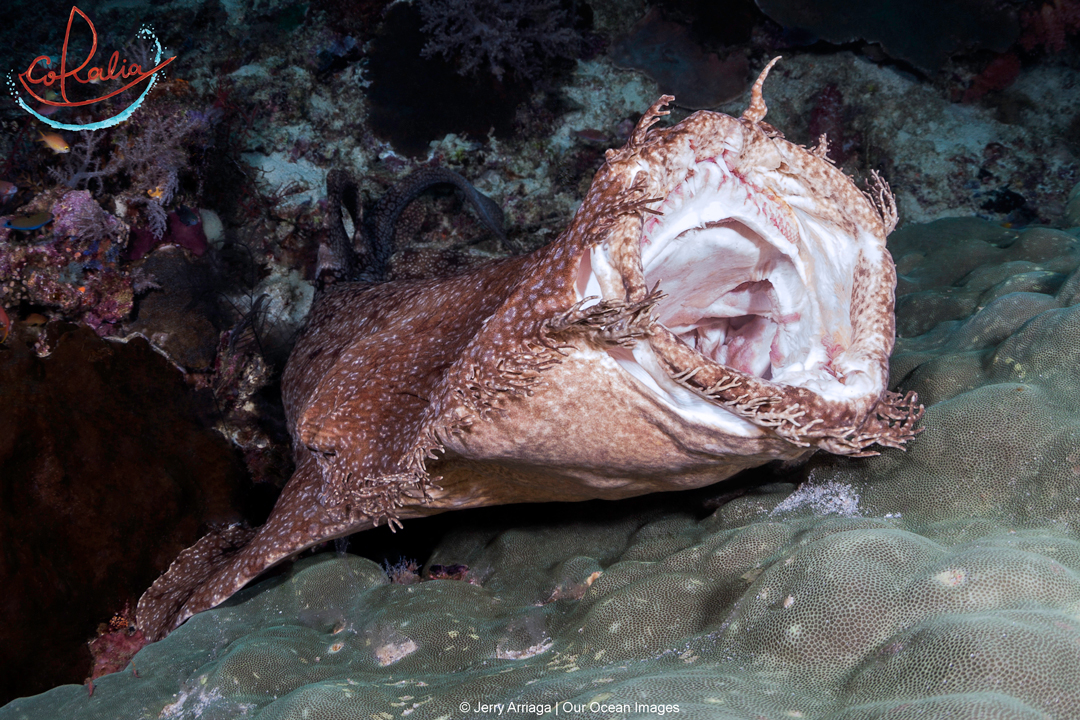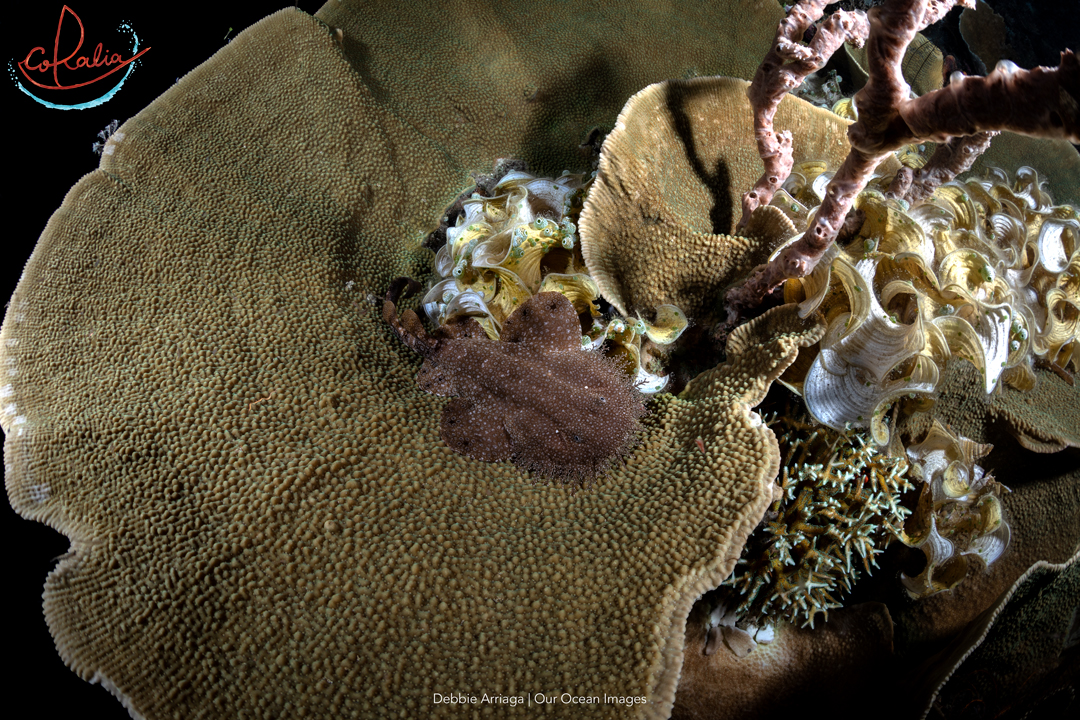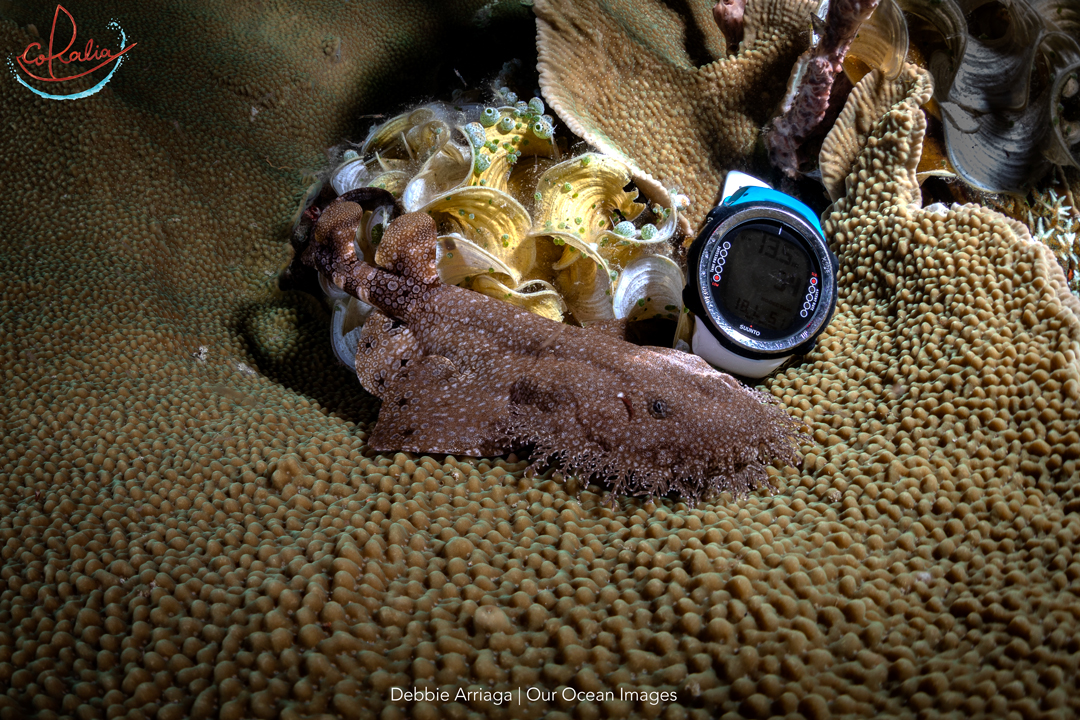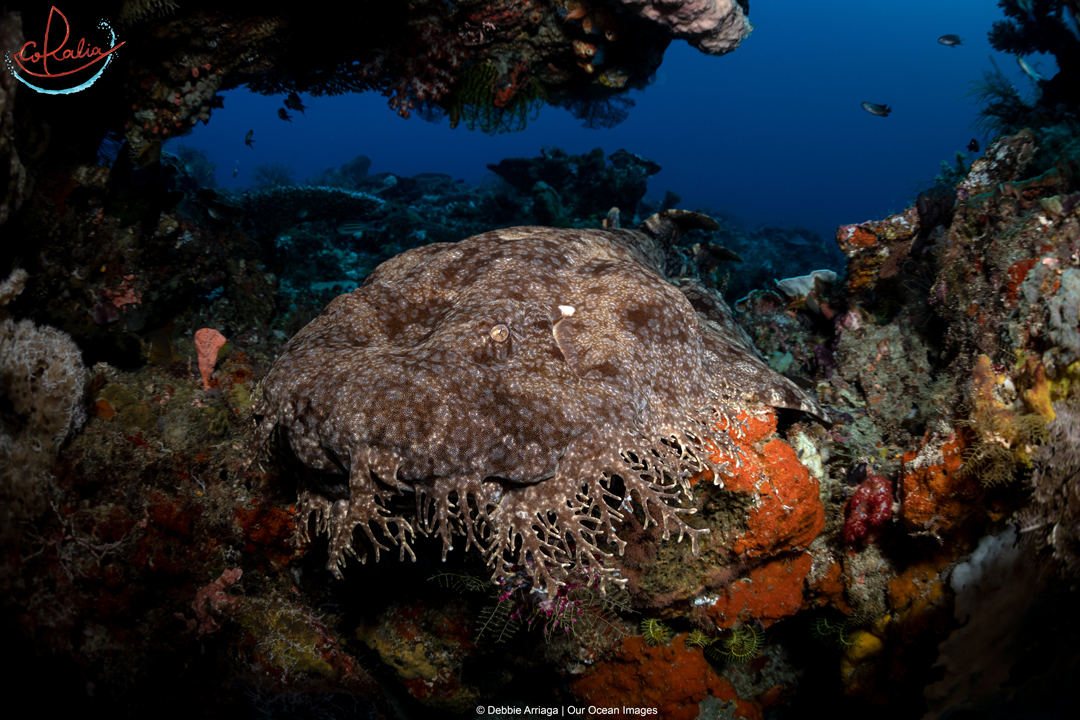In Raja Ampat, Indonesia it is fairly common to see the wonderful tasselled wobbegong shark while scuba diving. Raja Ampat is right in the centre of the coral triangle and has the highest biodiversity of fish and corals in the world! Coralia Liveaboard can take you on a diving cruise to look for wobbegong sharks!
Origin of the Name
Experts think the name wobbegong could come from the Australian Aborginal language, meaning ‘shaggy beard’. Its scientific name Eucrossorhinus dasypogon also refers to the growths around the mouth of this amazing shark.
Discovery
A Dutch ichthyologist first described the tasselled wobbegong shark in 1867. The name dasypogon comes from the Greek ‘dasys’ meaning hairy and ‘pogon’ meaning beard. In 1908 a new genus of Eucrossorhinus was created for this species. This name derives from the Greek ‘eu’ meaning good, ‘krossoi’ meaning tassel and ‘rhinos’ meaning nose.
It is a type of carpet shark and spends most of the time lazing around inside caves or under ledges. If you’re really lucky you might get to see one lying out on top of some coral or on a sandy patch.
Or for some very fortunate few you might see one swimming! Click here to go to our Coralia Liveaboard YouTube channel to see a Swimming Wobbegong Shark in Raja Ampat!
Feeding Behavior of the Wobbegong Shark in Raja Ampat
Wobbegong sharks are ambush predators. We are often asked ‘what do they eat?’ The answer is anything and everything! Wobbegongs have amazing camouflage. Their skin blends in especially well with their surroundings. Similarly their beard breaks up their outline making them difficult to spot. They lie very still and wait for their prey to swim over their mouths. Wobbegongs can even use their tails, waving them back and forth in order to lure their prey closer! In an instant they can open their mouths wide and consequently this movement of water sucks in their meal which is swallowed whole!

Wobbegong Shark Juveniles
Quite often it is very hard to tell the difference between a juvenile and an adult of a species. However this is not the case with wobbegong sharks. Baby wobbegong sharks are an exact miniature duplicate of the adult. Certainly super cute and very rare to see.

We found this teeny tiny juvenile wobbegong shark during a night dive on Batanta Island. It was so small it could fit in the palm of your hand. One of the dive masters put his dive computer next to the baby wobbegong to give some perspective as well as showing how small it was!

Discover Wobbegong Sharks in Raja Ampat for Yourself
Come and join us on board Coralia Liveaboard and we can look for this fantastic wobbegong shark in Raja Ampat, Indonesia! See our cruise schedule here.


One thought on “Wobbegong Shark Raja Ampat”
Comments are closed.